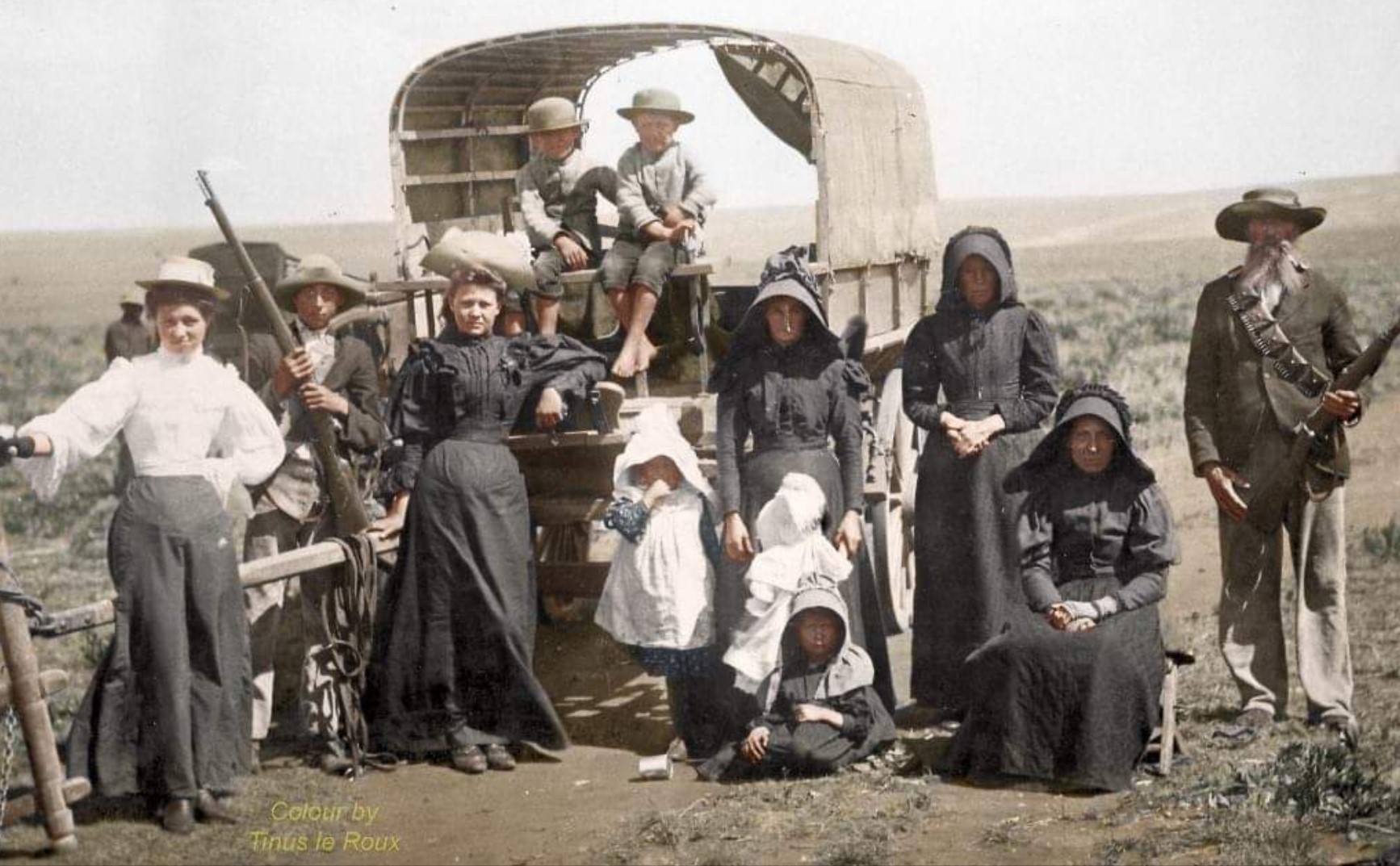
入植植民地主義
Settler colonialism

1900年頃の幌馬車で移動するボーア人の家族
★近代における入植者植民地主義を研究する学生にとって、アフリカとアメリカは正反対の概念である。アフリカは入植者植民地主義が敗北した大陸であり、アメリカは入植者植民地主義が勝利した大陸である——マムード・マムダーニ(2015: 596)
☆ 入植者による植民地主義(セトラーコロニアリズム;入植植民地主義)とは、植民地化や入植者が既存の社会を植民者の社会と永久的に置き換えるために、領土 に侵入し占領する場合に発生する。 入植者による植民地主義は、帝国権力によって組織または支援される典型的な外因的支配の形態であり、入植者による植民地主義を通じてその地域とのつながり や支配を維持している。入植者による植民地主義は、帝国権力が天然資源を搾取し、安価または無料の労働力を得るために地域を征服する搾取植民地主義とは対 照的である。入植者による植民地化は、征服した土地に新しい社会を建設することを伴うため、入植者人口の除去や(より議論の余地がある)植民地構造、入植 者と先住民間の協定、和解プロセスの改革による脱植民地化が行われない限り、無期限に続くことになる。 入植者による植民地研究は、かつてのイギリス植民地であった北米、オーストラリア、ニュージーランドに焦点を当てることが多い。これらの地域は、入植者に よる植民地主義の完全な原型に近い形となっている。しかし、入植者による植民地主義は特定の文化に限定されるものではなく、ヨーロッパ人以外の人々によっ ても実践されてきた。
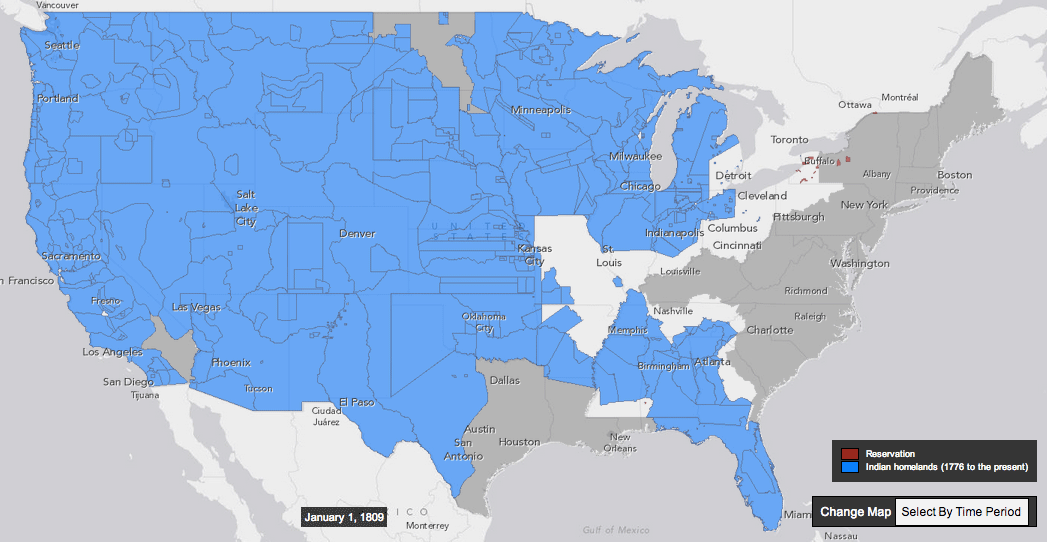
Graphic depicting the loss of Native American land to U.S. settlers in the 19th century
| Settler colonialism
is a logic and structure of displacement by settlers, using colonial
rule, over an environment for replacing it and its indigenous peoples
with settlements and the society of the settlers.[1][2][3][4] Settler colonialism is a form of exogenous (of external origin, coming from the outside) domination typically organized or supported by an imperial authority, which maintains a connection or control to the territory through the settler's colonialism.[5] Settler colonialism contrasts with exploitation colonialism, where the imperial power conquers territory to exploit the natural resources and gain a source of cheap or free labor. As settler colonialism entails the creation of a new society on the conquered territory, it lasts indefinitely unless decolonisation occurs through departure of the settler population or through reforms to colonial structures, settler-indigenous compacts and reconciliation processes.[a][6] Settler colonial studies has often focused on the "Anglo-Saxon settler colonial world" in Australia and North America, which are close to the complete, prototypical form of settler colonialism.[7] However, settler colonialism is not restricted to any specific culture and has been practised by non-Europeans.[2] |
入植者による植民地主義とは、入植者が植民地支配を利用し、環境とその先住民を置き換えるために、入植地と入植者の社会を構築する論理と構造である。[1][2][3][4] 入植者植民地主義とは、通常は帝国主義的権威によって組織化または支援される、外部起源(外部から来る)の支配形態である。この権威は、入植者による植民 地主義を通じて、その領土との繋がりや支配を維持する。[5] 入植者植民地主義は、帝国主義的権力が領土を征服し、天然資源を搾取し、安価または無償の労働力の源を得る搾取的植民地主義とは対照的である。入植者植民 地主義は征服地における新社会の創出を伴うため、入植者人口の離脱や植民地構造の改革、入植者と先住民の協定、和解プロセスによる脱植民地化が起きない限 り、無期限に継続する。[a] [6] 入植者植民地研究は、オーストラリアや北米における「アングロサクソン系入植者植民地世界」に焦点を当てることが多い。これらは入植者植民地主義の完全か つ典型的な形態に近い。[7] しかし入植者植民地主義は特定の文化に限定されるものではなく、非ヨーロッパ人によっても実践されてきた。[2] |
| Origins as a theory During the 1960s, settlement and colonization were perceived as separate phenomena from colonialism. Settlement endeavours were seen as taking place in empty areas, downplaying the Indigenous inhabitants. Later on in the 1970s and 1980s, settler colonialism was seen as bringing high living standards in contrast to the failed political systems associated with classical colonialism. Beginning in the mid-1990s, the field of settler colonial studies was established[7] distinct but connected to Indigenous studies.[8] Although often credited with originating the field, Australian historian Patrick Wolfe stated that "I didn't invent Settler Colonial Studies. Natives have been experts in the field for centuries."[9] Additionally, Wolfe's work was preceded by others that have been influential in the field, such as Fayez Sayegh's Zionist Colonialism in Palestine and Settler Capitalism by Donald Denoon.[9][10] |
理論としての起源 1960年代、入植と植民地は植民地主義とは別の現象として捉えられていた。入植事業は未開拓の土地で行われるものであり、先住民の存在は軽視されてい た。その後、1970年代から1980年代にかけて、入植者による植民地主義は、古典的な植民地主義に伴う政治システムの失敗とは対照的に、高い生活水準 をもたらすものと見なされるようになった。1990年代半ばから、入植者植民地研究という分野が確立された[7]。先住民研究とは区別されるが、関連して いる[8]。この分野の発案者としてよく知られているが、オーストラリアの歴史学者パトリック・ウルフは、「私が入植者植民地研究を考案したわけではな い。先住民は何世紀にもわたってこの分野の専門家だった」[9]。さらに、ウォルフの業績は、パレスチナのファエズ・サエグによる『シオニスト植民地主 義』やドナルド・デヌーンによる『入植者資本主義』など、この分野に影響を与えた他の著作に先行していた[9][10]。 |
| Definition and concept Settler colonialism occurs when foreign settlers arrive in an already inhabited territory to permanently inhabit it and found a new society. Intrinsically connected to this is the displacement or elimination of existing residents and destruction of their society.[1][2][3] Some scholars describe the process as inherently genocidal, considering settler colonialism to entail the elimination of existing peoples and cultures,[11] and not only their displacement (see genocide, "the intentional destruction of a people in whole or in part"). Depending on the definition, it may be enacted by a variety of means, including mass killing of the previous inhabitants, removal of the previous inhabitants and/or cultural assimilation.[12] Settler colonialism is distinct from migration because immigrants aim to join an existing society, not replace it.[13][14] |
定義と概念 入植者による植民地主義とは、すでに人が住んでいる地域に外国からの入植者がやってきて、その地域を永続的に居住地とし、新しい社会を築くことを指す。これと本質的に結びついているのが、既存の住民の追放や排除、そして彼らの社会の破壊である[1][2][3]。 一部の学者は、このプロセスを本質的に大量虐殺的であると表現し、入植者による植民地化には既存の民族や文化の排除が伴うと考え、その排除だけでなく(「意図的な民族全体または一部の破壊」を参照)、 定義にもよるが、その手段はさまざまであり、先住民の大虐殺、先住民の強制移住、先住民との文化的な同化などが挙げられる[12]。 入植者による植民地化は、移民が既存の社会に加わることを目指しており、既存の社会を置き換えることを目的としていないため、移民とは区別される[13][14]。 |
Examples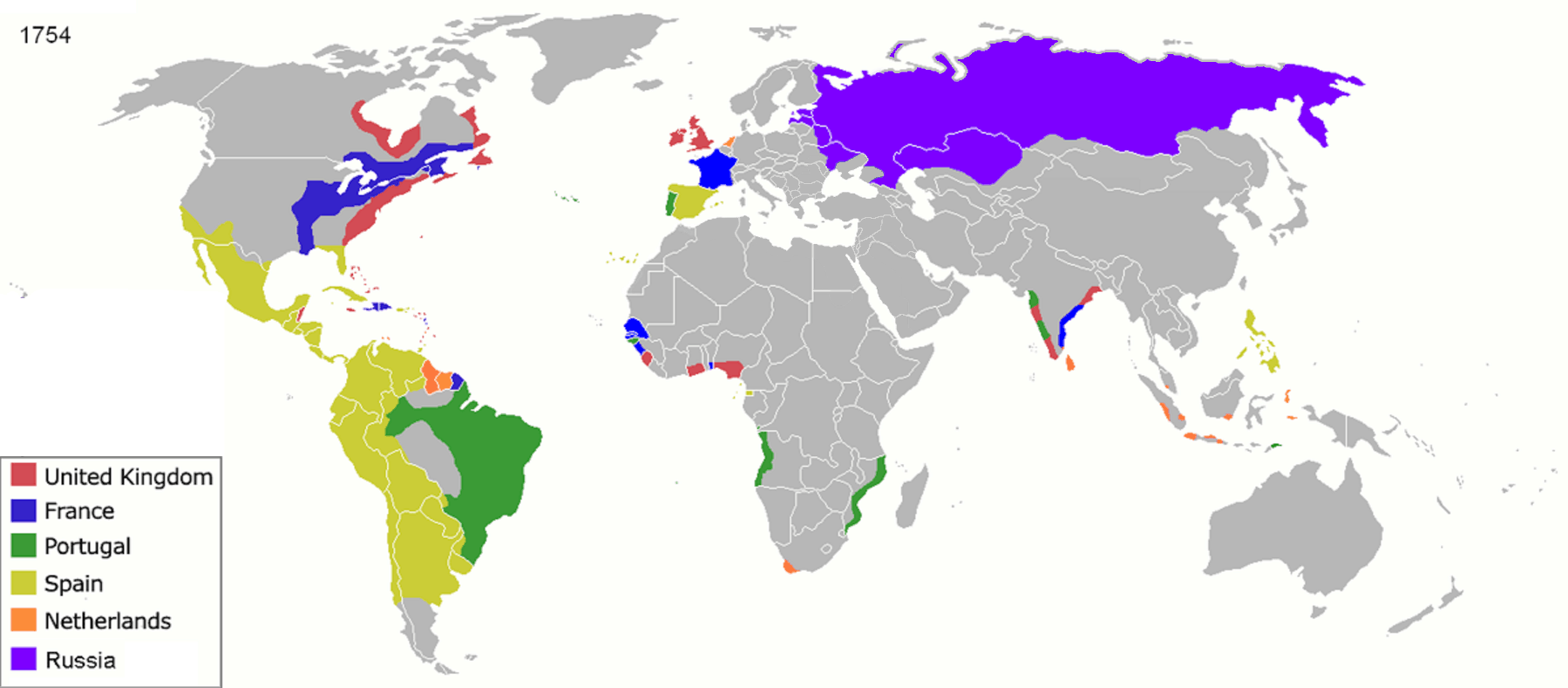 Map of colonial empires throughout the world in 1754, prior to the Seven Years' War The settler colonial paradigm has been applied to a wide variety of conflicts around the world, including the New Caledonia,[15] Western New Guinea,[16] the Andaman Islands, Argentina,[17] Australia, British Kenya, the Canary Islands,[18] Fiji, French Algeria,[19] Generalplan Ost, Hawaii,[20] Hokkaido, Ireland,[21] Israel/Palestine, Italian Libya and East Africa,[22][23] Kashmir,[24][25] Korea and Manchukuo,[26][27] Latin America, Liberia, New Zealand, northern Afghanistan,[28][29][30][31] North America, Posen and West Prussia and German South West Africa,[32] Rhodesia, Sápmi,[33][34][35] [36] South Africa, South Vietnam,[37][38][39] and Taiwan.[6][40] Africa See also: White Africans of European ancestry, Pied-Noir, and French conquest of Algeria 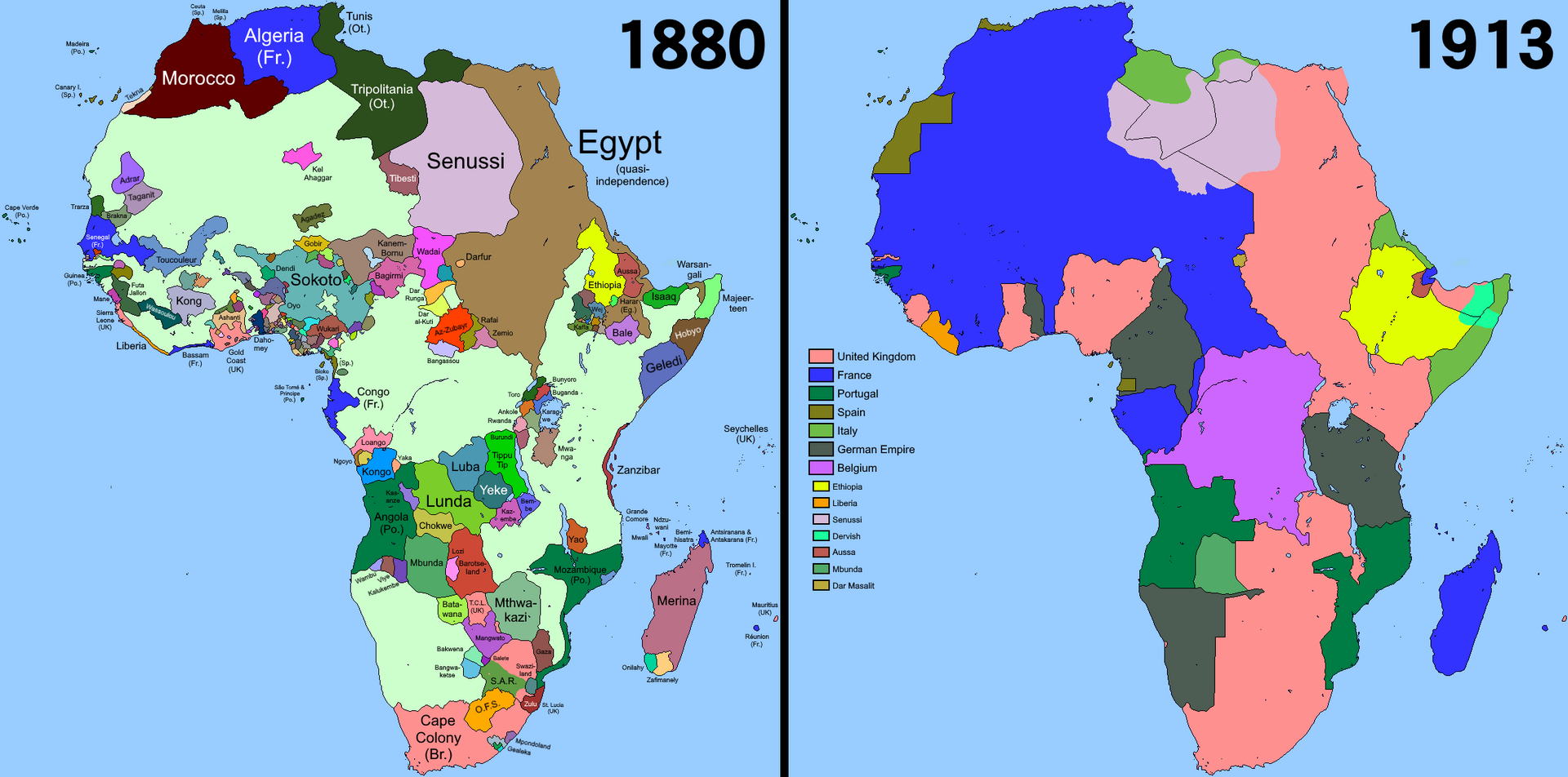 Comparison of Africa in the years 1880 and 1913 Canary Islands Further information: Conquest of the Canary Islands During the fifteenth century, the Kingdom of Castile sponsored expeditions by conquistadors to subjugate under Castilian rule the Macaronesian archipelago of the Canary Islands, located off the coast of Morocco and inhabited by the Indigenous Guanche people. Beginning with the start of the conquest of the island of Lanzarote on 1 May 1402 and ending with the surrender of the last Guanche resistance on Tenerife on 29 September 1496 to the now-unified Spanish crown, the archipelago was subject to a settler colonial process involving systematic enslavement, mass murder, and deportation of the Guanches, who were replaced with Spanish settlers, in a process foreshadowing the Iberian colonisation of the Americas that followed shortly thereafter. Also like in the Americas, Spanish colonialists in the Canaries quickly turned to the importation of slaves from mainland Africa as a source of labour due to the decimation of the already small Guanche population by a combination of war, disease, and brutal forced labour. Historian Mohamed Adhikari has labelled the conquest of the Canary Islands as the first overseas European settler colonial genocide.[18][33] Morocco Main articles: Moroccan settlers and Green March 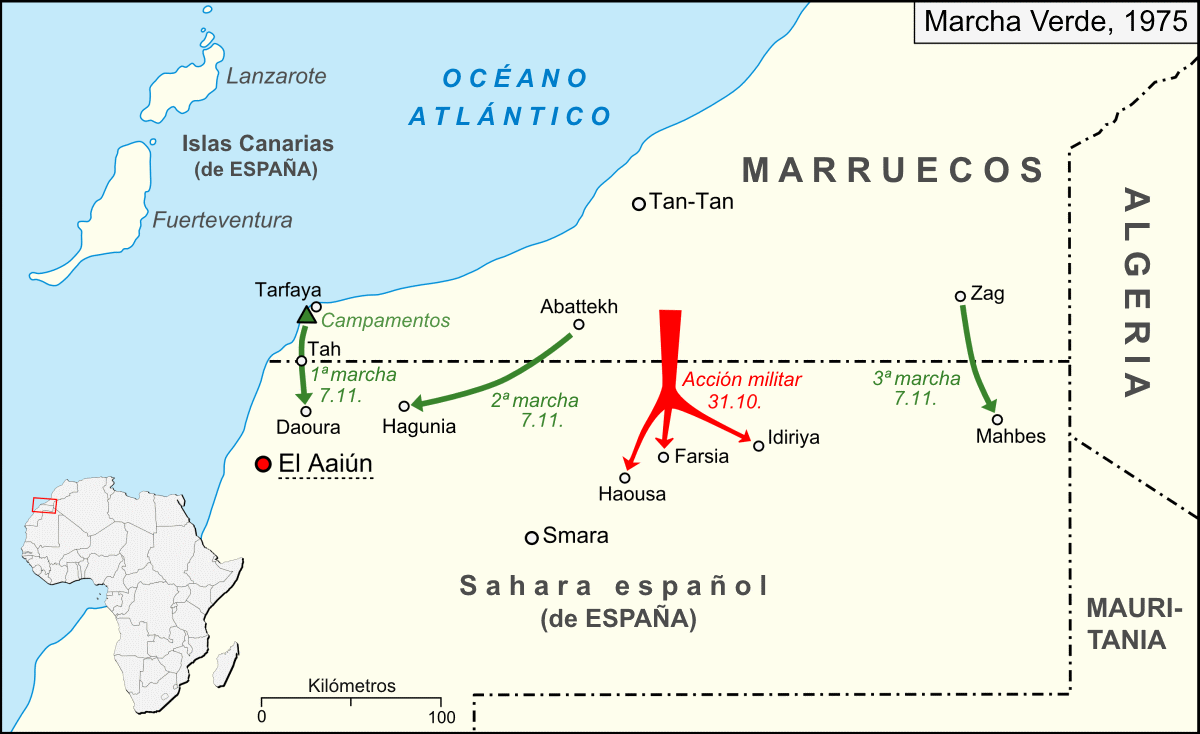 Marches of 7 November (in green) and military action of 31 October (in red) during the Green March in 1975 Since 1975, the Kingdom of Morocco has sponsored settlement schemes that have encouraged several thousand Moroccan citizens to settle Moroccan-occupied Western Sahara as part of the Western Sahara conflict. On 6 November 1975, the Green March took place, during which about 350,000 Moroccan citizens crossed into Saguia al-Hamra in the former Spanish Sahara after having received a signal from King Hassan II.[41] As of 2015, it is estimated that Moroccan settlers constitute two-thirds of the population of Western Sahara.[42] Under international law, the transfer of Moroccan citizens into the occupied territory constitutes a direct violation of Article 49 of the Fourth Geneva Convention (cf. Turkish settlers in Northern Cyprus and Israeli settlers in the Palestinian territories).[43] South Africa Main articles: Boers, White South Africans, and Apartheid  Boer family traveling by covered wagon circa 1900 In 1652, the arrival of Europeans sparked the beginning of settler colonialism in South Africa. The Dutch East India Company was set up at the Cape, and imported large numbers of slaves from Africa and Asia during the mid-seventeenth century.[44] The Dutch East India Company established a refreshment station for ships sailing between Europe and the east. The initial plan by Dutch East India Company officer Jan van Riebeeck was to maintain a small community around the new fort, but the community continued to spread and settle further than originally planned.[45] There was a historic struggle to achieve the intended British sovereignty that was achieved in other parts of the Commonwealth. State sovereignty belonged to the Union of South Africa (1910–1961), followed by the Republic of South Africa (1961–1994) and finally the modern day Republic of South Africa (1994–present day).[44] In 1948, the policy of Apartheid was introduced South Africa in order to segregate the native African population from Boer settlers and ensure the domination of the White populace over non-whites, politically, socially and economically.[46] As of 2014, the South African government has re-opened the period for land claims under the Restitution of Land Rights Amendment Act.[47] 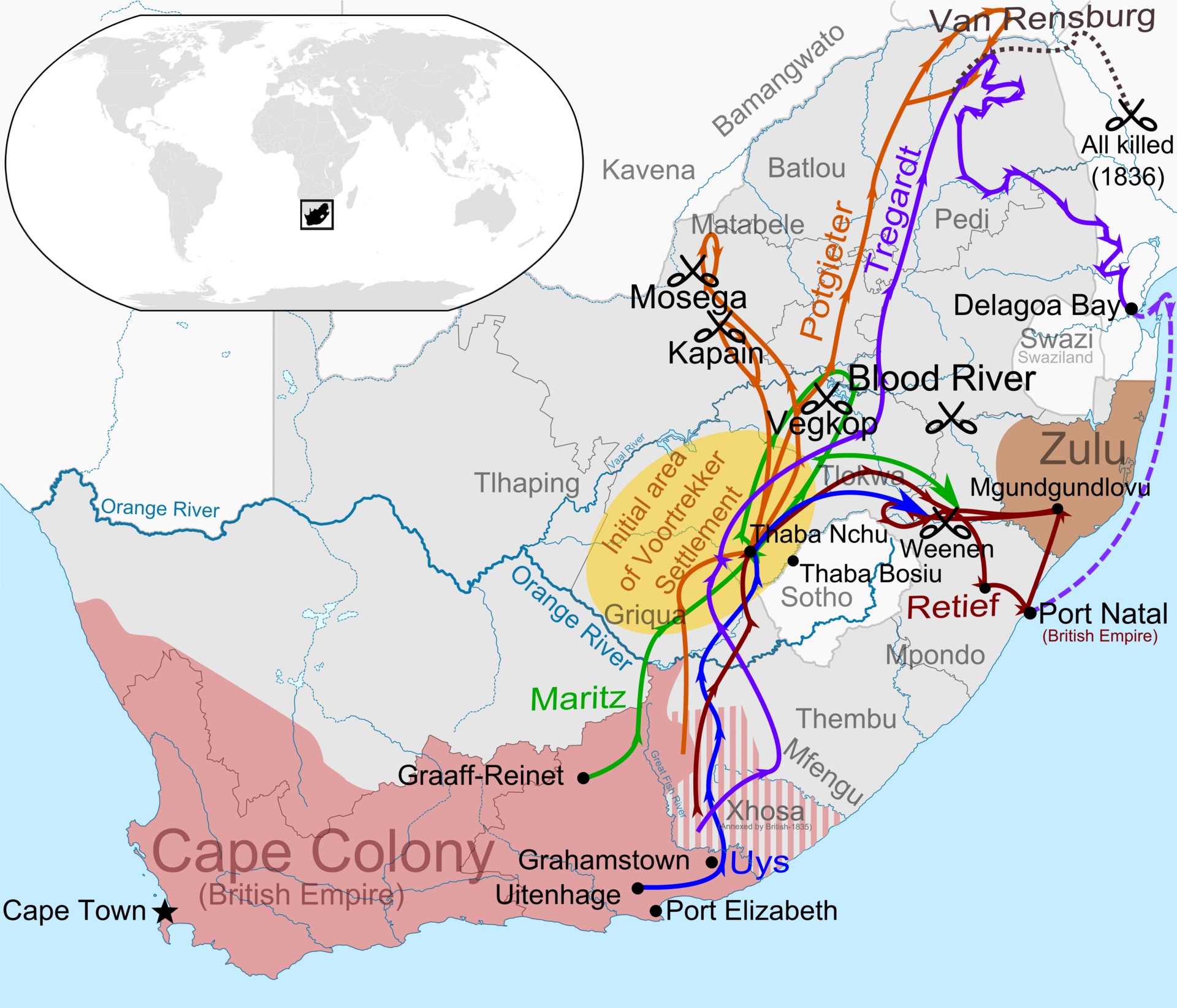 Map of the migration of the Boers into South Africa known as the Great Trek Liberia Main articles: Colony of Liberia and American Colonization Society Liberia is often regarded by scholars as a unique example of settler colonialism and the only known instance of Black settler colonialism.[48] It is frequently described as an African American settler colony tasked with establishing a Western form of governance in Africa.[49] Liberia was founded as the private colony of Liberia in 1822 by the American Colonization Society, a White American-run organization, to relocate free African Americans to Africa, as part of the Back-to-Africa movement.[50] This settlement scheme stemmed from fears that free African Americans would assist slaves in escaping, as well as the widespread belief among White Americans that African Americans were inherently inferior and should thus be relocated.[51] U.S. presidents Thomas Jefferson and James Madison publicly endorsed and funded the project.[50] Between 1822 and the early 20th century, around 15,000 African Americans colonized Liberia on lands acquired from the region's indigenous African population. The African American elite monopolized the government and established minority rule over the locals. As they possessed Western culture, they felt superior to the natives, whom they dominated and oppressed.[52] Indigenous revolts against the Americo-Liberian elite such as the Grebo Revolt in 1909–1910 and Kru Revolt in 1915 were quelled with U.S. military support.[48][53] United States Main articles: European colonization of the Americas, White Americans, Manifest destiny, and Native American genocide in the United States  U.S. westward expansion in the 19th century 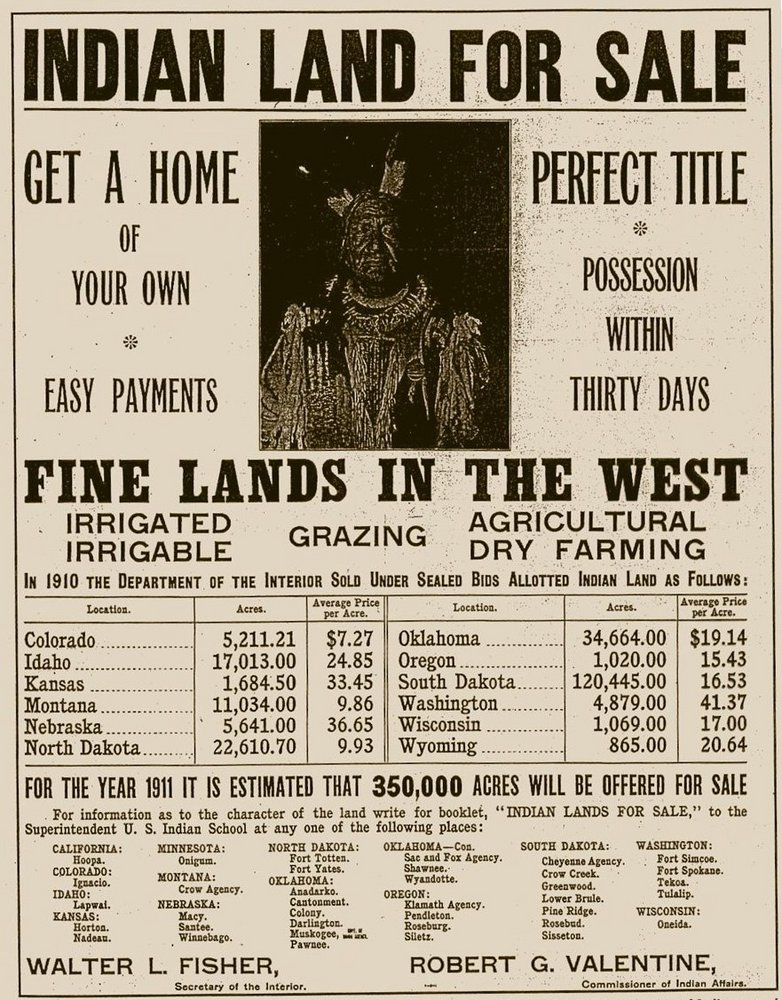 "Indian Land For Sale" by the U.S. Department of the Interior (1911) In colonial America, colonial powers created economic dependency and imbalance of trade, incorporating Indigenous nations into spheres of influence and controlling them indirectly with the use of Christian missionaries and alcohol.[54] With the emergence of an independent United States, desire for land and the perceived threat of permanent Indigenous political and spatial structures led to violent relocation of many Indigenous tribes to the American West, in what is known as the Trail of Tears.[55] In response to American encroachment on native land in the Great Lakes region, the Pan-Indian confederacies of the Northwest Confederacy and Tecumseh's Confederacy emerged. Despite initial victories in both cases, such as St. Clair's defeat or the siege of Detroit, both eventually lost, thereby paving the way for American control over the region. Settlement into conquered land was rapid. Following the 1795 Treaty of Greenville, American settlers poured into southern Ohio, such that by 1810 it had a population of 230,760.[56] The defeat of the confederacies in the Great Lakes paved the way for large land loss in the region, via treaties such as the Treaty of Saginaw which saw the loss of more than 4,000,000 acres of land.[57] Frederick Jackson Turner, the father of the "frontier thesis" of American history, noted in 1901: "Our colonial system did not start with Spanish War; the U.S. had had a colonial history from the beginning...hidden under the phraseology of 'interstate migration' and territorial organization'".[54] While the United States government and local state governments directly aided this dispossession through the use of military forces, ultimately this came about through agitation by settler society in order to gain access to Indigenous land. Especially in the US South, such land acquisition built plantation society and expanded the practice of slavery.[55] Settler colonialism participated in the formation of US cultures and lasted past the conquest, removal, or extermination of Indigenous people.[58] In 1928, Adolf Hitler spoke admiringly of the impact of white settler colonialism on the Natives, stating the US had "gunned down the millions of Redskins to a few hundred thousand, and now keep the modest remnant under observation in a cage".[59] The practice of writing the Indigenous out of history perpetrated a forgetting of the full dimensions and significance of colonialism at both the national and local levels.[54] Canada Main articles: Settler colonialism in Canada and Canadian genocide of Indigenous peoples 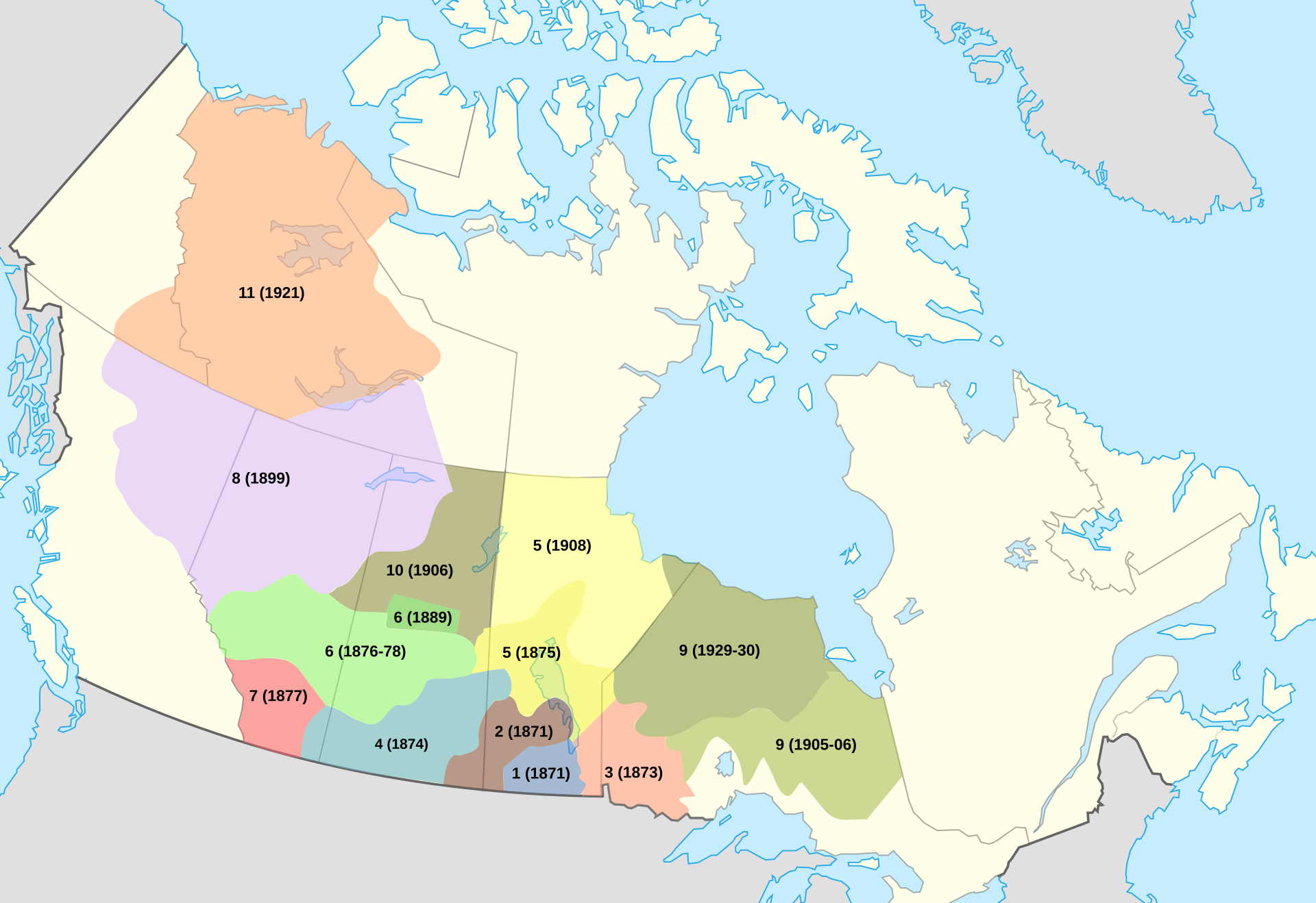 The Numbered Treaties signed between 1871 and 1921 transferred large tracts of land from the First Nations to Canada in return for different promises laid out in each treaty. Attempts to assimilate the Indigenous peoples of what is now Canada were rooted in imperial colonialism centred around European worldviews and cultural practices, and a concept of land ownership based on the discovery doctrine.[68] Original assimilation efforts were religiously-oriented, beginning in the 17th century with the arrival of French missionaries in New France.[69] Although not without conflict, European Canadians' early interactions with First Nations and Inuit populations were relatively peaceful.[70] First Nations and Métis peoples (of mixed European and Indigenous ancestry) played a critical part in the development of European colonies in Canada, particularly for their role in assisting European coureur des bois and voyageurs in their explorations of the continent during the North American fur trade.[71] The early European interactions with First Nations would change from Peace and Friendship Treaties to dispossession of lands through treaties and displacement legislation such as the Gradual Civilization Act,[72] the Indian Act, [73] the Potlatch ban,[74] and the pass system,[75] that focused on European ideals of Christianity, sedentary living, agriculture, and education.[76] Indigenous groups in Canada continue to suffer from racially motivated discrimination, despite living in one of the most progressive countries in the world.[77] Discriminatory practices such as criminal justice inequity, police brutality, high incarnation rates, and high rates of violence against Indigenous women have been subject to legal and political review.[78] ++++++++++++++++++++++++++++++++++++++++++ Asia China See also: Chinese expansionism, Sinicization, Dzungar genocide, Southward expansion of the Han dynasty, Sinicization of Tibet, Migration to Xinjiang, Persecution of Uyghurs in China, and Qin campaign against the Baiyue 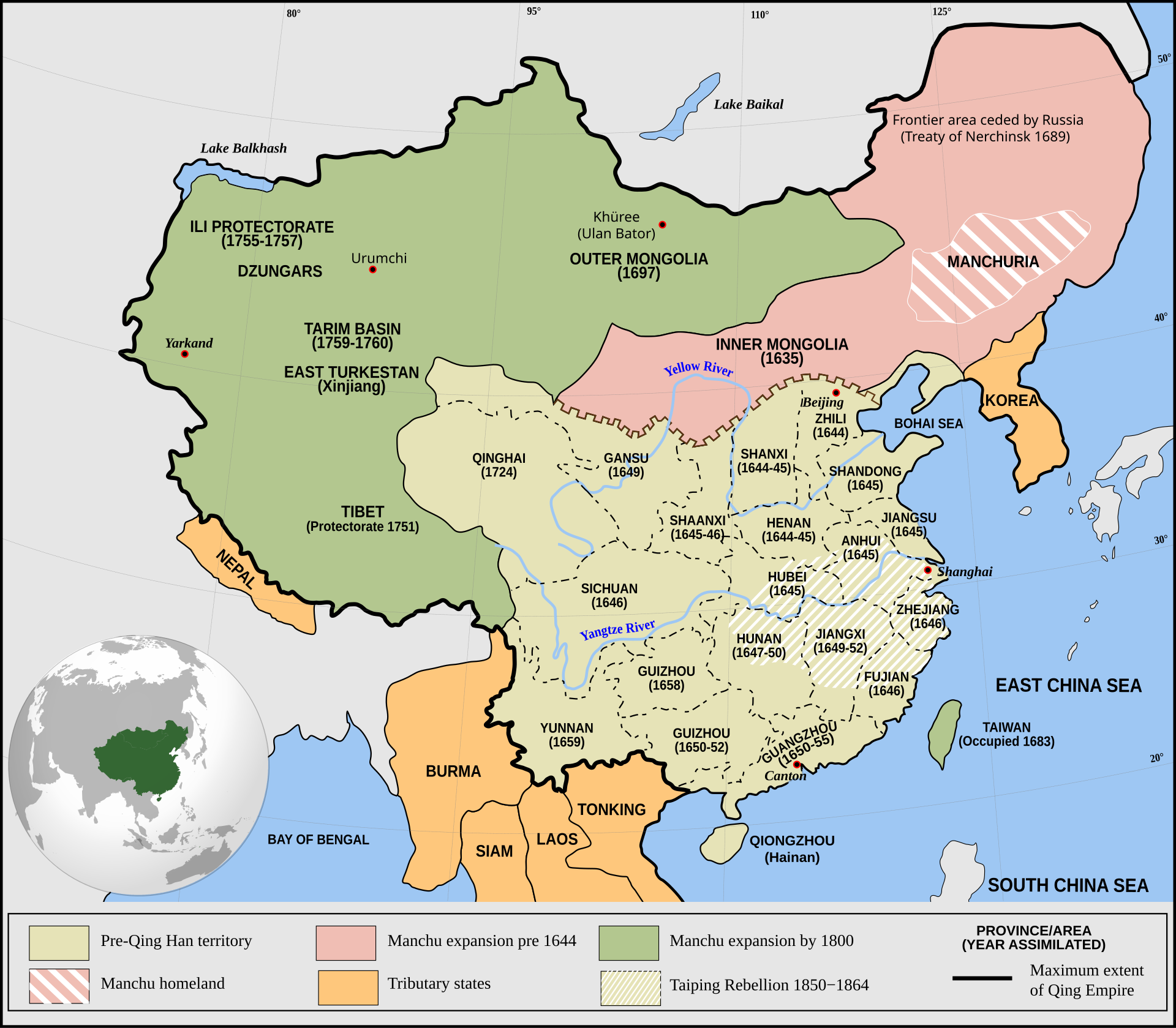 The expansion of the Qing dynasty of China Near the end of their rule the Qing tried to colonize Xinjiang, Tibet, and other parts of the imperial frontier. To accomplish this goal they began a policy of settler colonialism by which Han Chinese were resettled on the frontier.[60] This policy was renewed by the People's Republic of China, led by Chinese Communist Party.[61][62] Israel  Scholars of settler colonialism generally see the Zionist movement in Palestine as the archetype of the definition.[63] Map of Israeli settlements (magenta) in the occupied West Bank in 2020. The Australian historian Patrick Wolfe, credited with originating the field, famously defined Israel as the most through example of a settler colonialist state today.[63][64][9] However, this notion has also received significant criticism.[65] Main articles: Zionism as settler colonialism and Palestinian genocide accusation Zionism has been characterized by some scholars as a form of settler colonialism concerning region of Palestine and the Israeli–Palestinian conflict. This academic framework has also been embraced by leftist groups and individuals involved in anti-Israel activism and campus protests.[66][67][68] However, this viewpoint faces substantial criticism from scholars and is largely rejected by many Jews due to its perceived denial of the historical Jewish connection to Palestine, among other reasons.[65][69][70] Many of the founding fathers of Zionism themselves described the project as colonialism, such as Vladimir Jabotinsky, who said "Zionism is a colonization adventure."[71][72] Founder of the World Zionist Organization, Theodor Herzl, described the Zionist project as "something colonial" in a letter to Cecil Rhodes in 1902.[73] In 1967, the French historian Maxime Rodinson wrote an article later translated and published in English as Israel: A Colonial Settler-State?[74] Lorenzo Veracini describes Israel as a colonial state and writes that Jewish settlers could expel the British in 1948 only because they had their own colonial relationships inside and outside Israel's new borders.[75] Veracini believes the possibility of an Israeli disengagement is always latent and this relationship could be severed, through an "accommodation of a Palestinian Israeli autonomy within the institutions of the Israeli state".[76] Other commentators, such as Daiva Stasiulis, Nira Yuval-Davis,[77] and Joseph Massad in the "Post Colonial Colony: time, space and bodies in Palestine/Israel in the persistence of the Palestinian Question"[78] have included Israel in their global analysis of settler societies. Ilan Pappé describes Zionism and Israel in similar terms.[79][80] Scholar Amal Jamal, from Tel Aviv University, has stated, "Israel was created by a settler-colonial movement of Jewish immigrants".[81] Damien Short has accused Israel of carrying out genocide against Palestinians during the Israeli–Palestinian conflict since its inception within a settler colonial context.[82] Writing in the 1990s, the Australian historian Patrick Wolfe is credited with originating the field.[9] He theorized settler colonialism as a structure (rather than an event) premised on the elimination rather than exploitation of the native population, thus distinguishing it from classical colonialism. Wolfe argued that settler colonialism was centered on the control of land, that it continued after the closing of the frontier, and that continued to exist today, classifying Israel as a modern form of settler colonialism.[64] His approach was defining for the field, but has been challenged by other scholars on the basis that many situations involve a combination of elimination and exploitation.[6] Critics of the paradigm argue that Zionism does not fit the traditional framework of colonialism. S. Ilan Troen views Zionism as the return of an indigenous population to its historic homeland, distinct from imperial expansion.[83] Most Jews oppose the paradigm, saying it denies their historical connection to the land and aspirations for self-determination.[83][69][better source needed] Moses Lissak asserted that the settler-colonial thesis denies the idea that Zionism is the modern national movement of the Jewish people, seeking to reestablish a Jewish political entity in their historical territory. Zionism, Lissak argues, was both a national movement and a settlement movement at the same time, so it was not, by definition, a colonial settlement movement.[84] Russia and the Soviet Union Main articles: Ethnic Russians in post-Soviet states, Expansion of Russia (1500–1800), Russian conquest of Siberia, Russian conquest of the Caucasus, Circassian genocide, Russification, and Population transfer in the Soviet Union 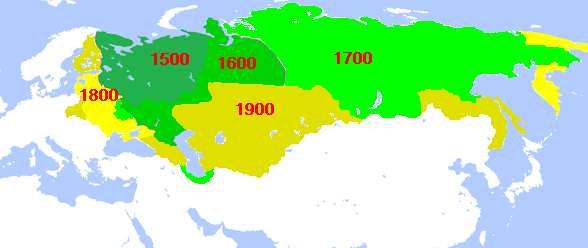 Expansion of Russia 1500–1900 Some scholars describe Russia as a settler colonial state, particularly in its expansion into Siberia and the Russian Far East, during which it displaced and resettled Indigenous peoples, while practicing settler colonialism.[85][86][87] The annexation of Siberia and the Far East to Russia was resisted by the Indigenous peoples, while the Cossacks often committed atrocities against them.[88] During the Cold War, new forms of Indigenous repression were practiced.[89] This colonization continued even during the Soviet Union in the 20th century.[90] The Soviet policy also sometimes included the deportation of the native population, as in the case of the Crimean Tatars.[91][unreliable source?] Taiwan Further information: Han Taiwanese and Taiwanese indigenous peoples According to a PhD thesis by Lin-chin Tsai, the ethnic makeup of Taiwan's contemporary population is largely the result of Chinese settler colonialism beginning in the seventeenth century.[92] Australia See also: Europeans in Oceania, Cultural assimilation, List of massacres of Indigenous Australians, and Australian frontier wars 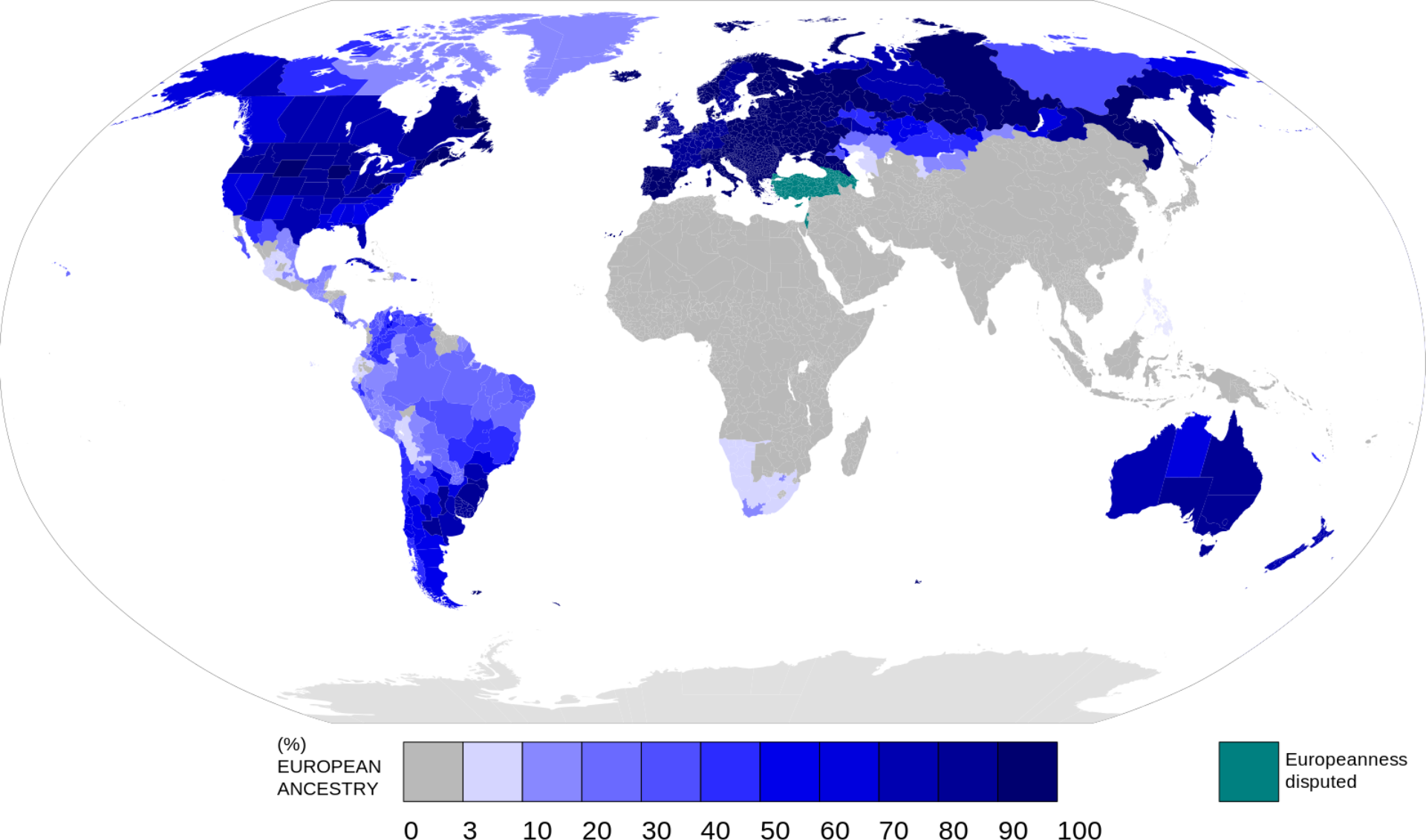 "Areas of European settlement". Censuses, articles quoted in description..) Europeans explored and settled Australia, displacing Aboriginal and Torres Strait Islander peoples. The Indigenous Australian population was estimated at 795,000 at the time of European settlement.[93] The population declined steeply for 150 years following settlement from 1788, due to casualties from infectious disease, the Australian frontier wars and forced re-settlement and cultural disintegration.[94][95] Responses Settler colonialism exists in tension with indigenous studies. Some indigenous scholars believe that settler colonialism as a methodology can lead to overlooking indigenous responses to colonialism; however, other practitioners of indigenous studies believe that settler colonialism has important insights that are applicable to their work.[9] Settler colonialism as a theory has also been criticized from the standpoint of postcolonial theory.[9] Political theorist Mahmoud Mamdani suggested that settlers could never succeed in their effort to become native, and therefore the only way to end settler colonialism was to erase the political significance of the settler–native dichotomy.[6] [6]Mamdani M (2015) Settler colonialism: Then and now. Critical Inquiry 41(3):596–614 According to Chickasaw scholar Jodi Byrd, in contrast to settler, the term arrivant refers to enslaved Africans transported against their will, and to refugees forced into the Americas due to the effects of imperialism.[96] In his book Empire of the People: Settler Colonialism and the Foundations of Modern Democratic Thought, political scientist Adam Dahl states that while it has often been recognized that "American democratic thought and identity arose out of the distinct pattern by which English settlers colonized the new world", histories are missing the "constitutive role of colonial dispossession in shaping democratic values and ideals".[97] |
例 1754年、七年戦争前の世界における植民地帝国地図 入植者による植民地化のパラダイムは、ニューカレドニア[15]、西ニューギニア[16]、アンダマン諸島、アルゼンチン[17]、オーストラリア、イギ リス領ケニア、カナリア諸島[1 8] フィジー、フランス領アルジェリア[19]、Generalplan Ost、ハワイ[20]、北海道、アイルランド[21]、イスラエル/パレスチナ、イタリア領リビアおよび東アフリカ[22][23]、カシミール [24][25]、韓国および満州国[26][27]、ラテンアメリカ、リベリア、ニュージーランド、アフガニスタン北部[2 8][29][30][31] 北アメリカ、ポゼンと西プロイセン、ドイツ領南西アフリカ[32]、ローデシア、サーミ[33][34][35][36]、南アフリカ、南ベトナム [37][38][39]、台湾[6][40]。 アフリカ 関連項目: ヨーロッパ系白人アフリカ人、ピエ・ノワール、フランスによるアルジェリア征服  1880年と1913年のアフリカの比較 カナリア諸島 詳細情報:カナリア諸島の征服 15世紀、カスティーリャ王国は、モロッコ沖に位置するカナリア諸島をカスティーリャ王国の支配下に置くため、征服者による遠征を支援した。1402年5 月1日にランサロテ島の征服が開始され、1496年9月29日にテネリフェ島で最後のグアンチェ族の抵抗勢力が降伏し、スペイン王国の統一が達成されたこ とで、 この諸島は入植者による植民地化プロセスに服し、グアンチェ族は組織的な奴隷化、大量虐殺、国外追放に遭い、スペイン人入植者に置き換えられた。このプロ セスは、その後間もなく起こったアメリカ大陸のイベリア植民地化を予見するものであった。また、アメリカ大陸と同様、カナリア諸島のスペイン植民地支配者 たちは、戦争、病気、過酷な強制労働の組み合わせにより、もともと少なかったグアンチェ族の人口が激減したため、労働力としてアフリカ本土からの奴隷の輸 入にすぐに切り替えた。歴史家のモハメド・アディカリは、カナリア諸島の征服をヨーロッパ人による海外植民地支配者による最初のジェノサイドと位置づけて いる[18][33]。 モロッコ 主な記事: モロッコ入植者とグリーン・マーチ  1975年のグリーン・マーチにおける11月7日の行進(緑)と10月31日の軍事行動(赤) 1975年以来、モロッコ王国は、西サハラ紛争の一環として、モロッコ占領下の西サハラに数千人のモロッコ市民が移住することを奨励する入植計画を支援し てきた。1975年11月6日、グリーン・マーチが行われ、ハサン2世国王の合図を受けて、約35万人のモロッコ国民が旧スペイン領サハラのサギア・ア ル・ハムラに越境した[41]。2015年現在、 西サハラの人口の3分の2はモロッコ人入植者であると推定されている[42]。 国際法上、占領地にモロッコ国民を移住させることは、第4次ジュネーブ条約第49条に違反する直接的な行為である(北キプロスのトルコ人入植者やパレスチナ領土のイスラエル人入植者と比較)。[43] 南アフリカ 主な項目: ボーア人、白人南アフリカ人、アパルトヘイト  1900年頃の幌馬車で移動するボーア人の家族 1652年、ヨーロッパ人の到来により、南アフリカに植民地開拓主義が始まった。オランダ東インド会社がケープに設立され、17世紀半ばにアフリカやアジ アから多数の奴隷を輸入した[44]。オランダ東インド会社は、ヨーロッパと東アジアを往来する船のための休憩所を設置した。オランダ東インド会社の役員 ヤン・ファン・リーベックによる当初の計画では、新しい砦の周りに小さなコミュニティを維持することになっていたが、コミュニティは当初の計画よりもさら に広がり、定着していった[45]。国家主権は、南アフリカ連邦(1910年~1961年)、南アフリカ共和国(1961年~1994年)、そして現在の 南アフリカ共和国(1994年~現在)へと受け継がれていった[44]。 1948年、アパルトヘイト政策が南アフリカに導入された 。これは、アフリカ先住民をボーア人入植者から隔離し、白人住民が非白人を政治、社会、経済的に支配することを確実にするためであった[46]。2014 年現在、南アフリカ政府は土地権利回復修正法に基づき、土地請求の受付期間を再開している[47]。  ボーア人の南アフリカへの移住経路図。グレート・トレックとして知られる。 リベリア 主な記事: リベリア植民地およびアメリカ植民地化協会 リベリアは、学者たちから、入植者による植民地主義のユニークな例であり、黒人による入植者植民地主義の唯一の既知の例であるとみなされることが多い [48]。アフリカに西洋型の統治を確立するという使命を負ったアフリカ系アメリカ人の入植地としてよく説明される[49]。 リベリアは、1822年に 1822年、アフリカへの帰還運動の一環として、アフリカ系アメリカ人をアフリカに移住させることを目的とした白人アメリカ人による組織、アメリカ植民地 化協会によって設立された。この入植計画は、自由の身となったアフリカ系アメリカ人が奴隷の逃亡を手助けするのではないかという懸念と、白人アメリカ人の 間で広まっていた「アフリカ系アメリカ人は 本質的に劣っており、移住させるべきである、という白人アメリカ人の間での広範な信念から生じたものであった[51]。アメリカ合衆国の大統領トーマス・ ジェファーソンとジェームズ・マディソンは、このプロジェクトを公に支持し、資金援助した[50]。1822年から20世紀初頭にかけて、約1万5千人の アフリカ系アメリカ人が、この地域の先住アフリカ系住民から獲得した土地にリベリアを植民地化した。アフリカ系アメリカ人のエリート層は政府を独占し、現 地住民に対する少数派支配を確立した。彼らは西洋文化を身につけていたため、支配し抑圧する先住民よりも優れていると感じていた[52]。1909年から 1910年のグレボの反乱や1915年のクルーの反乱など、アメリカ系リベリア人エリート層に対する先住民の反乱は、米国の軍事支援により鎮圧された [48][53]。 アメリカ合衆国 主な項目: ヨーロッパによるアメリカ大陸の植民地化、白人アメリカ人、明白なる天命、アメリカ先住民の大量虐殺  19世紀のアメリカ合衆国の西への拡大  アメリカ合衆国内務省による「インディアン土地販売」 (1911年) 植民地時代のアメリカでは、宗主国が先住民を勢力圏に取り込み、キリスト教の宣教師やアルコールを利用して間接的に支配することで、経済的依存と貿易の不 均衡を生み出していた[ 54] 独立アメリカ合衆国の出現により、土地に対する欲望と先住民の永続的な政治的・空間的構造に対する脅威の認識から、多くの先住民族がアメリカ西部へと強制 移住させられた。 五大湖地域における先住民の土地へのアメリカの侵入に対し、パンインディアン連合であるノースウェスト連合とテクムセ連合が結成された。いずれの場合も、 セントクレア敗北やデトロイト包囲などの初期の勝利にもかかわらず、最終的には敗北し、アメリカによる同地域支配への道が開かれた。征服地に定住する動き は急速に進んだ。1795年のグリーンビル条約の後、アメリカ人入植者がオハイオ州南部に殺到し、1810年には人口が230,760人に達した [56]。五大湖周辺の連合体の敗北により、 サギノー条約などの条約により、400万エーカー以上の土地が失われた[57]。 アメリカ史の「開拓地論」の父であるフレデリック・ジャクソン・ターナーは、1901年に次のように述べている。「スペイン戦争から始まったのではない。 米国は最初から植民地史を持っていた...『州間の移住』や領土編成という表現の下に隠されていた」[54]。米国政府と各州政府は、軍隊を使って直接的 にこの土地の収奪を支援したが、最終的には先住民が所有する土地へのアクセスを得るために入植者社会が扇動した結果、このような事態に至った。特にアメリ カ南部では、こうした土地の取得がプランテーション社会を築き、奴隷制を拡大した[55]。入植者による植民地主義は、アメリカ文化の形成に関与し、先住 民の征服、追放、絶滅後も続いた[58]。1928年、アドルフ・ヒトラーは、白人入植者による植民地主義が先住民に与えた影響について、賞賛の言葉を述 べた。「アメリカは数百万人のレッドスキン族を数万人に銃殺し、今ではそのわずかな生き残りを檻に入れて監視している」と述べた[59]。先住民を歴史か ら抹殺するという行為は、国家レベルでも地域レベルでも、植民地主義の全容と重要性を忘れさせる結果となった[54]。 カナダ 主な記事:カナダの入植者による植民地主義と先住民に対するカナダのジェノサイド  1871年から1921年にかけて締結された番号付き条約は、各条約に定められた様々な約束と引き換えに、先住民からカナダへ広大な土地を移譲した。 現在のカナダに居住する先住民を同化しようとする試みは、ヨーロッパ中心の世界観と文化慣行、発見主義に基づく土地所有概念を核とした帝国主義的植民地主 義に根ざしていた[68]。初期の同化政策は宗教的指向が強く、17世紀にフランス人宣教師がヌーベルフランスに到来したことに端を発する。[69] 衝突がなかったわけではないが、ヨーロッパ系カナダ人と先住民・イヌイットとの初期の交流は比較的平和的であった。[70] 先住民とメティス(ヨーロッパ系と先住民の混血)は、特に北米毛皮交易期における大陸探検でヨーロッパのクーレ・デ・ボワやボヤジュールを支援した役割か ら、カナダにおけるヨーロッパ植民地の発展に重要な役割を果たした。[71] 初期のヨーロッパ人と先住民の交流は、平和と友好の条約から、条約や「漸進的文明化法」[72]、「インディアン法」[73]、「ポトラッチ禁止令」 [74]、「パス制度」[75]といった土地剥奪・移住促進法へと変化した。これらはキリスト教、定住生活、農業、教育といったヨーロッパの理想を押し付 けるものだった。[76] カナダ先住民は、世界で最も進歩的な国の一つに住んでいるにもかかわらず、人種差別に基づく差別を今も受け続けている。[77] 刑事司法における不平等、警察の暴力、高い投獄率、先住民女性に対する高い暴力発生率といった差別的慣行は、法的・政治的な見直しの対象となってきた。 [78] ++++++++++++++++++++++++++++++++++++++++++ アジア 中国 関連項目: 中国の膨張主義、漢化、ジュンガル人虐殺、漢王朝の南下、チベットの漢化、新疆への移住、中国におけるウイグル人の迫害、秦の白月に対する遠征  清朝の中国における拡大 清王朝の統治末期、清は新疆、チベット、その他の帝国領土の植民地化を図った。この目的を達成するために、漢民族を辺境に移住させる入植者植民地主義政策を開始した[60]。この政策は、中国共産党が主導する中華人民共和国によって再開された[61][62]。 イスラエル  入植者植民地主義の研究者は、一般的にパレスチナのシオニズム運動を定義の典型と見なしている[63]。2020年の占領されたヨルダン川西岸地区におけ るイスラエルの入植地(マゼンタ)の地図。この分野を切り開いたことで知られるオーストラリアの歴史学者パトリック・ウルフは、イスラエルを「今日の植民 地帝国主義国家の最も典型的な例」と定義した。 主な項目:植民地帝国主義としてのシオニズム、パレスチナ人虐殺の告発 シオニズムは、パレスチナ地域とイスラエル・パレスチナ紛争に関する植民地帝国主義の一形態であると、一部の学者から指摘されている。この学術的枠組み は、反イスラエル活動やキャンパスでの抗議活動に関与する左翼グループや個人によっても受け入れられている[66][67][68]。しかし、この視点は 学者からかなりの批判に直面しており、パレスチナへのユダヤ人の歴史的つながりを否定していると受け止められていることなどから、多くのユダヤ人から否定 されている[65][69][70]。 シオニズムの創設者の多くは、このプロジェクトを植民地主義であると表現した。 例えばウラジーミル・ヤボチンスキーは「シオニズムは植民地化への冒険である」と述べた[71][72]。世界シオニスト機構の創設者であるテオドール・ ヘルツルは、1902年にセシル・ローズ宛ての手紙の中でシオニズムを「植民地化」と表現した[73]。 1967年、フランスの歴史家マキシム・ロディンソンは後に英語に翻訳され、イスラエル: 植民地入植国家?[74]ロレンツォ・ヴェラチーニはイスラエルを植民地国家と表現し、ユダヤ人入植者が1948年にイギリスを追い出すことができたの は、イスラエルの新しい国境の内外において、彼ら自身の植民地関係を持っていたからだと書いている[75]。ヴェラチーニは、イスラエルの撤退の可能性は 常に潜在しており、この関係は「 パレスチナ系イスラエル人の自治をイスラエル国家の制度に組み込むこと」[76]によって、この関係は解消される可能性がある。他の論客、例えばダイ ヴァ・スタシウリス、ニラ・ユバル=デイヴィス[77]、ジョセフ・マサドの『ポストコロニアル・コロニー:パレスチナ問題の持続におけるパレスチナ/イ スラエルの時間、空間、身体』[78]では、イスラエルを植民地社会のグローバルな分析に含めている。イラン・パッペは、シオニズムとイスラエルを同様の 言葉で表現している[79][80]。テルアビブ大学の学者アマール・ジャマルは、「イスラエルはユダヤ人移民の入植者植民地運動によって作られた」と述 べている[81]。ダミアン・ショートは、イスラエル・パレスチナ紛争の開始以来、入植者植民地という文脈の中で、イスラエルがパレスチナ人に対するジェ ノサイドを行っていると非難している[82]。 1990年代に執筆したオーストラリアの歴史家パトリック・ウルフは、この分野を切り開いた人物として知られている[9]。彼は、入植者による植民地主義 を、先住民を搾取するのではなく排除することを前提とした構造(出来事ではない)として理論化し、古典的な植民地主義と区別した。ウォルフは、入植者によ る植民地主義は土地の支配が中心であり、フロンティアの閉鎖後も続いていると主張し、イスラエルを現代的な入植者による植民地主義に分類した[64]。彼 のアプローチは、この分野において画期的であったが、多くの状況では排除と搾取が組み合わさっているという理由で、他の学者から異議を唱えられている [6]。 このパラダイムの批判者たちは、シオニズムは植民地主義の伝統的な枠組みには当てはまらないと主張している。S. イラン・トレンは、シオニズムを帝国主義的拡張とは異なる、先住民族の故郷への帰還と捉えている[83]。ほとんどのユダヤ人は、このパラダイムに反対し ており、このパラダイムは、土地に対する歴史的なつながりや、民族自決を求める彼らの願望を否定するものだとしている[ 83][69][より確かな情報源が必要] モーゼス・リサックは、入植者植民地論は、シオニズムがユダヤ人の歴史的領土にユダヤ人の政治主体を再建しようとする近代的な民族運動であるという概念を 否定していると主張した。リサックは、シオニズムは民族運動であり、同時に入植運動でもあったため、定義上、植民地入植運動ではなかったと主張している [84]。 ロシアとソビエト連邦 主な項目: ソビエト連邦の民族構成、ロシアの拡大(1500年~1800年)、ロシアによるシベリア征服、ロシアによるコーカサス征服、チェルケス人虐殺、ロシア化、ソビエト連邦における人口移動  1500年から1900年までのロシアの拡大 一部の学者は、ロシアを植民地化による植民地国家と表現している 特にシベリアやロシア極東への進出において、先住民を強制移住させ、入植地化を進めながら、ロシアは植民地化を進めた[85][86][87]。シベリア と極東のロシアへの併合は先住民に抵抗されたが、一方でコサックはしばしば彼らに対して残虐行為を行った[88]。 ] 冷戦時代には、先住民に対する新たな弾圧形態が実践された[89]。 この植民地化は、20世紀のソビエト連邦時代にも続いた[90]。ソビエト連邦の政策には、クリミア・タタール人の場合のように、先住民を強制移住させることも含まれていた[91][出典不明?]。 台湾 詳細情報: 漢民族の台湾人と台湾先住民 蔡琳珍の博士論文によると、台湾の現代人口の民族構成は、17世紀に始まった中国の入植者植民地主義の結果であることが多い[92]。 オーストラリア 関連項目:オセアニアのヨーロッパ人、文化同化、オーストラリア先住民虐殺の一覧、オーストラリア開拓戦争  「ヨーロッパ人の入植地」。国勢調査、説明で引用された記事。 ヨーロッパ人がオーストラリアを探検し、入植したことにより、アボリジニやトレス海峡諸島民は追い出された。ヨーロッパ人が入植した当時、オーストラリア の先住民人口は79万5000人と推定されていた[93]。入植後の1788年から150年間にわたり、伝染病による犠牲者、オーストラリア開拓戦争、強 制再定住、文化崩壊などにより、人口は急激に減少した[94][95]。 反応 入植者による植民地主義は、先住民研究と緊張関係にある。一部の先住民研究者は、入植者による植民地化という手法は、植民地化に対する先住民の反応を見過 ごしてしまう可能性があると考えている。しかし、先住民研究を実践する他の研究者は、入植者による植民地化には彼らの研究に応用できる重要な洞察があると 考えている[9]。 政治理論家のマフムード・マンダニは、入植者が先住民になる努力で成功することは決してないとし、 先住民になることは決してできないため、入植者による植民地主義を終わらせる唯一の方法は、入植者と先住民の二分法における政治的意義を消し去ることである[6]。 [6]Mamdani M (2015) Settler colonialism: Then and now. Critical Inquiry 41(3):596–614 チカソー族の研究者であるジョディ・バードによると、入植者とは対照的に、到着者という言葉は、自らの意思に反して奴隷として輸送されたアフリカ人や、帝国主義の影響によりアメリカ大陸に強制移住させられた難民を指す[96]。 政治学者のアダム・ダールは、著書『人民の帝国: 政治学者アダム・ダールは著書『人民の帝国:入植者植民地主義と近代民主主義思想の基盤』の中で、「アメリカの民主主義思想とアイデンティティは、イギリ ス人入植者による新世界への植民地化という独特なパターンから生まれた」と認識されることが多かったが、歴史は「民主主義的価値観と理想を形成するための 植民地からの収奪という構成的役割」を欠いていると指摘している[97]。 |
| Anabaptist settler colonialism Pre-modern human migration European emigration Transmigration program |
再洗礼派の入植者による植民地主義 前近代的な人間の移動 ヨーロッパからの移住 移住計画 |
| Works cited Dahl, Adam (2018). Empire of the People: Settler Colonialism and the Foundations of Modern Democratic Thought. University Press of Kansas. ISBN 978-0-7006-2607-6. Veracini, Lorenzo (2013). "'Settler Colonialism': Career of a Concept". The Journal of Imperial and Commonwealth History. 41 (2): 313–333. doi:10.1080/03086534.2013.768099. hdl:1959.3/353066. S2CID 159666130. Retrieved 7 May 2022. |
引用文献 ダール、アダム(2018)。『人民の帝国:入植者植民地主義と近代民主主義思想の基礎』。カンザス大学出版局。ISBN 978-0-7006-2607-6。 ヴェラチーニ、ロレンツォ(2013)。「『入植者植民地主義』:概念の歩み」。帝国・コモンウェルス史ジャーナル. 41 (2): 313–333. doi:10.1080/03086534.2013.768099. hdl:1959.3/353066. S2CID 159666130. 2022年5月7日取得. |
| Further reading Adhikari, Mohamed (2021). Civilian-Driven Violence and the Genocide of Indigenous Peoples in Settler Societies. Routledge. ISBN 978-1-000-41177-5. Cox, Alicia. "Settler Colonialism". Oxford Bibliographies. Oxford University Press. Retrieved 21 January 2021. Englert, Sai (2022). Settler Colonialism: An Introduction. Pluto Press. ISBN 978-0-7453-4490-4. Belich, James (2009). Replenishing the earth: the settler revolution and the rise of the Anglo-world, 1783–1939. Oxford: Oxford University Press. p. 573. ISBN 978-0-19-929727-6. Horne, Gerald. The Apocalypse of Settler Colonialism: The Roots of Slavery, White Supremacy, and Capitalism in Seventeenth-Century North America and the Caribbean. Monthly Review Press, 2018. 243p. ISBN 9781583676639 Horne, Gerald. The Dawning of the Apocalypse: The Roots of Slavery, White Supremacy, Settler Colonialism, and Capitalism in the Long Sixteenth Century. Monthly Review Press, 2020. ISBN 978-1-58367-875-6. Mamdani, Mahmood (2020). Neither Settler nor Native. Harvard University Press. ISBN 978-0-674-98732-6. Manjapra, Kris (2020). "Settlement". Colonialism in Global Perspective. Cambridge University Press. pp. 43–70. ISBN 978-1-108-42526-1. Marx, Christoph (2017). Settler Colonies, EGO - European History Online, Mainz: Institute of European History, retrieved: 17 March 2021 (pdf). Mikdashi, Maya (2013). What is settler colonialism? American Indian Culture and Research Journal 37.2: 23–34. Pedersen, Susan; Elkins, Caroline, eds. (2005). Settler Colonialism in the Twentieth Century. Routledge. Sakai, J. (1983). Settlers: The Mythology of the White Proletariat. PM Press. ISBN 978-1-62963-037-3. Veracini, Lorenzo (2010). Settler Colonialism: A Theoretical Overview. Hampshire, UK: Palgrave MacMillan. p. 182. ISBN 9780230284906. Veracini, Lorenzo (2015). The Settler Colonial Present. Springer. ISBN 978-1-137-37247-5. Wolfe, Patrick (2016). Traces of History: Elementary Structures of Race. Verso Books. |
参考文献 アディカリ、モハメド(2021)。『入植者社会における民間主導の暴力と先住民族のジェノサイド』。ラウトレッジ。ISBN 978-1-000-41177-5。 コックス、アリシア。「入植者植民地主義」。『オックスフォード・バイオリグラフィーズ』。オックスフォード大学出版局。2021年1月21日取得。 エンゲルト、サイ(2022)。『入植者植民地主義:入門』。プルート・プレス。ISBN 978-0-7453-4490-4。 ベリッチ、ジェームズ(2009)。『地球の再生:入植者革命とアングロ世界の台頭、1783–1939』。オックスフォード:オックスフォード大学出版局。p. 573. ISBN 978-0-19-929727-6. ホーン、ジェラルド. 『入植者植民地主義の黙示録:17世紀北米とカリブにおける奴隷制、白人至上主義、資本主義の根源』. マンスリー・レビュー・プレス, 2018. 243p. ISBN 9781583676639 ホーン、ジェラルド。『黙示録の夜明け:16 世紀における奴隷制、白人至上主義、入植者による植民地主義、資本主義のルーツ』。月刊レビュー出版、2020 年。ISBN 978-1-58367-875-6。 マムダニ、マフムード(2020)。『入植者でも先住民でもない』ハーバード大学出版局。ISBN 978-0-674-98732-6。 マンジャプラ、クリス(2020)。「入植」『グローバルな視点から見た植民地主義』ケンブリッジ大学出版局。43-70 ページ。ISBN 978-1-108-42526-1。 マルクス、クリストフ (2017)。入植者コロニー、EGO - ヨーロッパ歴史オンライン、マインツ:ヨーロッパ歴史研究所、取得日:2021年3月17日 (pdf)。 ミクダシ、マヤ(2013)。「入植者植民地主義とは何か?」『アメリカ先住民文化研究ジャーナル』37.2: 23–34。 ペダーセン、スーザン;エルキンス、キャロライン編(2005)。『20世紀の入植者植民地主義』。ラウトレッジ。 サカイ、J.(1983)。『入植者たち:白人プロレタリアートの神話』。PMプレス。ISBN 978-1-62963-037-3。 ヴェラチーニ、ロレンツォ(2010)。『入植者植民地主義:理論的概観』。ハンプシャー、英国:パルグレイブ・マクミラン。p. 182。ISBN 9780230284906。 ヴェラチーニ、ロレンツォ(2015)。『入植者植民地主義の現在』。シュプリンガー。ISBN 978-1-137-37247-5。 ウルフ、パトリック(2016)。『歴史の痕跡:人種の初歩的構造』。ヴァーソ・ブックス。 |
| https://en.wikipedia.org/wiki/Settler_colonialism | |
| Anabaptist settler colonialism |
再洗礼派の入植者による植民地主義 |
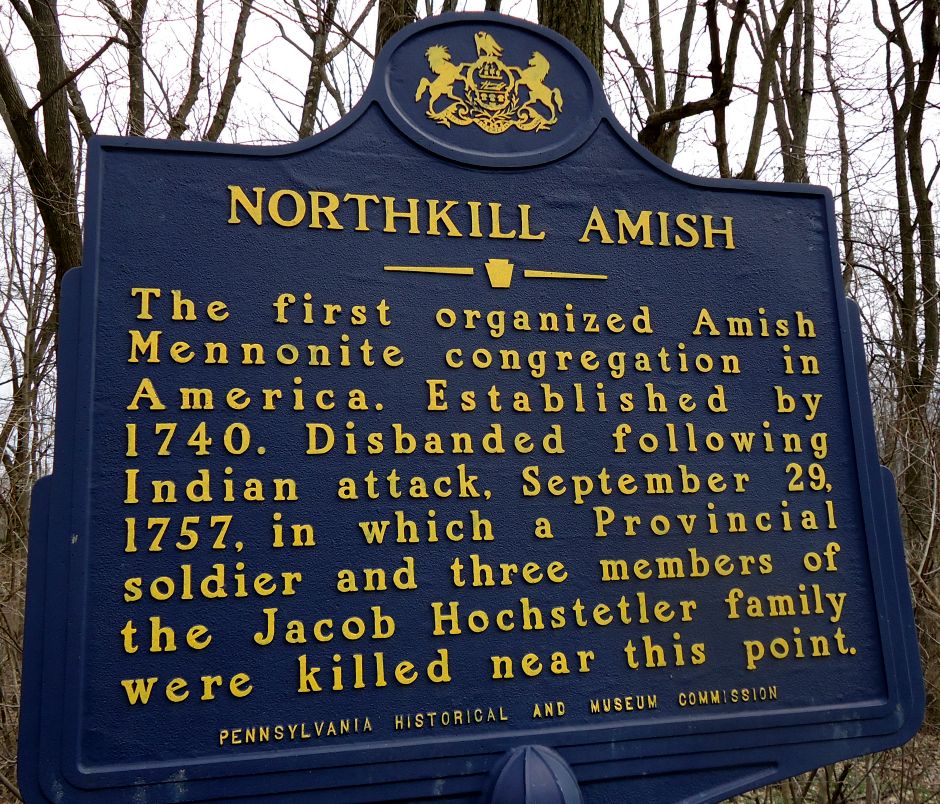 Historical marker for the Northkill Amish Settlement, an 18th-century Amish settlement destroyed by Lenape and Shawnee people who resented encroachment on their lands. |
 ノースキル・アーミッシュ入植地の歴史的記念碑。18世紀に設立されたアーミッシュの集落は、自らの土地への侵入を嫌ったレナペ族とショーニー族によって破壊された。 |
| Anabaptists,
including the Amish, Hutterites, and Mennonites, have played a role in
settler colonialism since the 1700s, in regions such as Eastern Europe,
North America, and Latin America. The Russian Mennonites were invited
to Novorossiya (what is now Southern Ukraine and Russia) by Catherine
the Great following the Russo-Crimean Wars that resulted in the
annexation of the Crimean Khanate; Mennonites settled on and farmed
land that had been or would be ethnically cleansed of the Indigenous
Crimean Tatar and Nogai populations. In the United States, Amish
people, Hutterites, and Mennonites settled and farmed land after
American Indian populations were displaced. In Canada, Hutterite and
Mennonite settlers were incentivized to settle and cultivate farmland
on the western Prairies following the displacement of Cree and Métis
peoples, part of state-supported efforts to increase the white
population. Across Latin America, Mennonite colonization has been seen
as a driver of environmental damage, notably deforestation of the
Amazon rainforest through land clearance for agriculture.[1][2][3]
While Mennonite communities are often called "colonies", some Mennonite
communities in Africa avoid the term due to the legacy of European
colonialism.[4] In the 21st century, some Mennonites have begun to
reckon with the Mennonite legacy of settler colonialism and its
relationship with Mennonite pacifism as a historic peace church.[5] |
再 洗礼派(アーミッシュ、フッテライト、メノナイトを含む)は、1700年代以降、東欧、北米、ラテンアメリカなどの地域において、入植者による植民地主義 に関与してきた。ロシア・クリミア戦争の結果クリミア・ハン国が併合された後、ロシアのメノナイトはエカテリーナ2世によってノヴォロシア(現在のウクラ イナ南部とロシア)に招かれた。メノナイトは、クリミア・タタール人やノガイ人といった先住民族が民族浄化された土地、あるいは浄化される予定の土地に定 住し耕作した。アメリカ合衆国では、アミッシュ、フッター派、メノナイトが、アメリカ先住民が追放された後に土地に定住し耕作した。カナダでは、クリー族 やメティス族が追放された後、フッター派とメノナイトの入植者が西部プレーリー地方の農地開拓を奨励された。これは白人人口増加を目的とした国家支援政策 の一環であった。ラテンアメリカ全域では、メノナイトの入植が環境破壊の要因と見なされており、特に農業用地開拓によるアマゾン熱帯雨林の森林伐採が顕著 である。[1][2][3] メノナイト共同体はしばしば「コロニー」と呼ばれるが、アフリカのメノナイト共同体の一部は、ヨーロッパの植民地主義の遺産を理由にこの用語を避けてい る。[4] 21世紀に入り、一部のメノナイトは、入植者植民地主義というメノナイトの遺産と、歴史的な平和教会としてのメノナイト平和主義との関係に向き合い始めて いる。[5] |
| About There have never been Anabaptist states, but Anabaptists have participated in surrogate colonialism. While the majority of Anabaptists worldwide are non-white in the 21st century, historically the Amish, Hutterites, and Mennonites were overwhelmingly white people of European descent for several centuries. While the Amish and Hutterites are still mostly white, most Mennonites are not. According to Professor John Eicher, author of Exiled Among Nations: German and Mennonite Mythologies in a Transnational Age, Mennonites "routinely sought out states with weak or amorphous borders where they could establish agrarian communities that were relatively free from state control", aiding in nation-states' attempts to colonize land and displace Indigenous peoples. On three continents within the span of 150 years, Eicher writes, Mennonites "sought indigenous lands confiscated by state authorities" with the aim of clearing and cultivating the land, aiding in government-supported settlement schemes.[6] In the 21st century, scholars, historians, and Anabaptists themselves have begun to research and debate the Anabaptist role in settler colonialism, racism, antisemitism, and white supremacy, a legacy that may be perceived as at odds with the traditional Anabaptist dedication to pacifism.[7][8] |
アナバプテストについて アナバプテスト国家は存在したことがないが、アナバプテストは代理植民地主義に加担してきた。21世紀の世界のアナバプテストの大多数は非白人だが、歴史 的に見てアーミッシュ、フッター派、メノナイトは数世紀にわたり圧倒的にヨーロッパ系白人であった。アーミッシュとフッター派は今も主に白人だが、メノナ イトの大多数はそうではない。『諸国民に追放されて:越境時代におけるドイツ人とメノナイトの神話』の著者ジョン・アイカー教授によれば、メノナイトは 「国家の統制から比較的自由な農業共同体を築けるよう、国境が弱いか曖昧な国家を日常的に探した」という。これは国家による土地の植民地化と先住民の追放 を助長する行為であった。アイカーは、150年の間に三大陸でメノナイトが「国家当局に没収された先住民の土地を求めた」と記している。その目的は土地を 開墾・耕作し、政府支援の入植計画を助けることだった。[6] 21世紀に入り、学者や歴史家、そしてアナバプテスト自身も、入植者による植民地主義、人種差別、反ユダヤ主義、白人至上主義におけるアナバプテストの役 割について研究と議論を開始している。これは伝統的なアナバプテストの平和主義への献身と矛盾する遺産と見なされる可能性がある。[7][8] |
| Africa While many Mennonite communities have traditionally been called "colonies", Mexican Old Order Mennonite families who have immigrated to Angola eschew the word "colony" due to the violent legacy of Portuguese colonialism in Africa. As part of a deal with a diamond mining corporation, the Mennonites have cleared and farmed almost 2,000 acres of land.[4] |
アフリカ 多くのメノナイト共同体は伝統的に「コロニー」と呼ばれてきたが、アンゴラに移住したメキシコのオールドオーダー・メノナイト家族は、アフリカにおけるポ ルトガル植民地主義の暴力的な遺産ゆえに「コロニー」という言葉を避けている。ダイヤモンド採掘企業との契約の一環として、メノナイトはほぼ2,000 エーカーの土地を開墾し耕作している。[4] |
| Europe Following the Russo-Crimean Wars, Catherine the Great invited German and Vistula delta Mennonites to settle in what is now Southern Ukraine. These supposedly "empty lands" were inhabited by Tatars.[9] Mennonites of the Molotschna colony arrived in 1803 and lived in close proximity to the Nogais, as both Mennonites and Nogais were involved in sheepherding. The Nogais were a semi-nomadic Tatar Muslim ethnic group. The Nogais resented the Mennonite settlers and relations between the two groups were often mutually strained. Conflicts sometimes arose because the Mennonites objected to the Nogai practice of allowing cattle to freely roam and graze. As Christians, the Mennonites often held Islamophobic views and perceived Muslims as backwards nonbelievers.[10] Mennonites and Nogais lived in close proximity until 1860, when Nogais departed from the region. Both landless and landed Mennonites had extensive share-pasturing contracts with Nogais, a practice that disadvantaged and harmed the Nogai economy and society. The Nogai exodus was caused by the practice of landless Mennonites leasing large tracts of Nogai land. The departure of Nogais caused a landlessness crisis among Mennonite colonists, as the Russian government then granted land leases to Bulgarian colonists.[11] By October 1860, 35,000 Nogais had fled to Ottoman Turkey, leaving only 105 Nogais left in what is now Ukraine.[12] |
ヨーロッパ ロシア・クリミア戦争の後、エカテリーナ2世はドイツとヴィスワ川デルタのメノナイトを現在の南ウクライナに定住させるよう招いた。これらのいわゆる「無 人地帯」にはタタール人が住んでいた。[9] モロチナ植民地のメノナイトは1803年に到着し、ノガイ人と近接して生活した。メノナイトもノガイ人も羊飼いに従事していたためである。ノガイ族は半遊 牧のタタール系イスラム教徒民族であった。ノガイ族はメノナイト入植者を嫌悪し、両者の関係はしばしば緊張していた。メノナイトがノガイ族の家畜を自由に 放牧する慣習に反対したため、衝突が生じることもあった。キリスト教徒であるメノナイトはしばしばイスラム嫌悪の思想を持ち、ムスリムを後進的な異教徒と 見なしていた。[10] メノナイトとノガイ族は1860年まで近接して生活していたが、この年ノガイ族は地域を離れた。土地を持たないメノナイトも土地所有者も、ノガイ族と広範 な共同放牧契約を結んでいた。この慣行はノガイ経済と社会に不利益と損害をもたらした。ノガイ族の離散は、土地を持たないメノナイトがノガイ族の広大な土 地を借り受けた慣行が原因であった。ノガイ族の離脱は、メノナイト入植者たちに土地不足の危機をもたらした。ロシア政府がブルガリア人入植者に土地の賃貸 権を認めたためである。[11] 1860年10月までに、3万5千人のノガイ族がオスマン帝国領トルコへ逃亡し、現在のウクライナ地域に残ったノガイ族はわずか105人となった。 [12] |
| North America Canada Mennonites of European descent first settled near what is now the Waterloo, Ontario in 1786, the traditional territory of the Attawandaron, Anishinaabeg and Haudenosaunee people on the Haldimand Tract, land that was granted in 1784 to support the Six Nations, but was instead sold to Mennonite settlers in 1805.[13] Low German Mennonite settlers from the Russian Empire first arrived in Manitoba in the 1870s. Treaty 1, Treaty 2, and the Manitoba Act of 1870 were ostensibly crafted to protect Indigenous rights, but treaties were broken by the Canadian government, who incentivized white European immigrants to settle on "empty space" that had been recently inhabited by various Indigenous peoples. White Mennonites of European descent were granted blocks of land in Treaty 1 territory, including the East Reserve in 1874 and the West Reserve in 1875, which originally belonged to Anishinaabe and Swampy Cree people. Although these land grants and privileges allowed Mennonites and other European settlers to enjoy religious and cultural freedom, thousands of Indigenous people were displaced and killed due to these policies.[14] Upon early Mennonite settlement in Western Canada, Indigenous peoples and Mennonite settlers also agreed to secret "handshake" treaties, as a way to signal they would "share the land and help each other out."[15] Remembered through oral tradition in Indigenous communities, these treaties were often broken and forgotten by Mennonite settler groups.[16] In Western Canada, many Russian Mennonites settled on the Prairies. In Saskatchewan, the Canadian Mennonite Board of Colonization was established in 1922.[17] Beginning in the 1920s, Mennonites and other settler groups, also settled unceded land in British Columbia, particularly in the Fraser Valley.[18] |
北アメリカ カナダ ヨーロッパ系メノナイトは1786年、現在のオンタリオ州ウォータールー付近に初めて定住した。この地はハルディマンド地区に位置し、アタワンダロン族、 アニシナベ族、ハウデノソーニー族の伝統的な領域であった。この土地は1784年にシックス・ネイションズを支援するために与えられたが、代わりに 1805年にメノナイト入植者に売却された。[13] ロシア帝国出身の低地ドイツ語系メノナイト入植者は1870年代に初めてマニトバ州に到着した。条約1号、条約2号、そして1870年のマニトバ法は表向 き先住民の権利保護のために制定されたが、カナダ政府は条約を破棄し、様々な先住民が最近まで居住していた「空き地」への白人ヨーロッパ系移民の入植を奨 励した。ヨーロッパ系白人メノナイトは、条約1の領域において土地の区画を付与された。これには1874年の東保留地と1875年の西保留地が含まれ、こ れらは元々アニシナベ族とスワンプクリー族の土地であった。これらの土地付与と特権によりメノナイトや他のヨーロッパ系入植者は宗教的・文化的自由を享受 できたが、この政策により数千人の先住民が追放され殺害された。[14] カナダ西部へのメノナイト初期入植時、先住民とメノナイト入植者は「土地を共有し互いに助け合う」意思を示す手段として、秘密の「握手による条約」も結ん だ[15]。先住民コミュニティで口承伝承として記憶されるこれらの条約は、メノナイト入植者グループによってしばしば破られ忘れ去られた。[16] カナダ西部では、多くのロシア系メノナイトがプレーリー地方に定住した。サスカチュワン州では、1922年にカナダ・メノナイト植民委員会が設立された。 [17] 1920年代以降、メノナイトや他の入植者集団は、ブリティッシュコロンビア州、特にフレーザー渓谷において、未割譲の土地にも入植した。[18] |
| Mexico See also: Mennonites in Mexico Mennonites first arrived in Mexico in 1922. Mexican Mennonites descend from Canadian Mennonites who themselves were of Russian Mennonite descent. The settlement of Mennonite immigrants was supported by the Mexican government. Mennonite settlement contributed to adverse societal effects to and displacement of Indigenous and mestizo people. Plautdietsch-speaking Mennonite communities lived separately from Indigenous and mestizo Mexicans and did not try to assimilate to surrounding cultures. The settlement was shortly after the Mexican Revolution (1910-1920), during which land reform was a major political question. Mennonites came into conflict with mestizo and Indigenous Mexicans by gaining land that was already claimed.[19] |
メキシコ 関連項目: メキシコのメノナイト メノナイトがメキシコに初めて到着したのは1922年である。メキシコのメノナイトはカナダ人メノナイトの子孫であり、そのカナダ人メノナイトはロシア系 メノナイトの血筋を持つ。メノナイト移民の入植はメキシコ政府によって支援された。メノナイトの入植は先住民やメスティーソ(混血)の人々に対する社会的 悪影響と追放をもたらした。プラウトディーツ語を話すメノナイト共同体は、先住民やメスティーソのメキシコ人とは別々に生活し、周囲の文化に同化しようと はしなかった。この定住はメキシコ革命(1910-1920年)直後であり、当時土地改革が主要な政治課題となっていた。メノナイトは既に権利が主張され ていた土地を獲得したことで、メスティーソや先住民のメキシコ人と対立した。 |
| United States The first Anabaptist settlers in North America were German and Swiss Mennonites and Amish people who settled in the Province of Pennsylvania in the 1700s. From Pennsylvania, Anabaptists then settled in other colonies and later in additional US states.[20] In some places, such as Washington and Johnson counties in Iowa, Amish people were the very first white settlers to settle on Indigenous land. Amish settlers arrived in Johnson and Washington counties in the 1840s.[21] The first Amish settlement in North America, the Northkill Amish Settlement in Pennsylvania, was destroyed in 1757 following the Hochstetler massacre. The massacre was committed during the French and Indian War by French-allied Native Americans who resented English encroachment on their land. The settlement had been located close to the edge of the legal boundary upon which European settlers were permitted by colonial authorities to settle.[22] From 1873 on, many Russian Mennonites settled the Great Plains on the western frontier of the United States. Mennonites settled land in Indian Territory (now Oklahoma), and in 1880 established missionary work in an attempt to convert inhabitants of the Cheyenne and Arapaho Tribes to Christianity. A decade later, the Mennonite Brethren Church began missionary work in an attempt to convert the Comanche.[23] Hutterites who settled in western states like South Dakota gained formerly Indigenous land through the Homestead Acts.[24][25] |
アメリカ合衆国 北米における最初の再洗礼派入植者は、1700年代にペンシルベニア州に定住したドイツ系およびスイス系のメノナイトとアーミッシュであった。ペンシルベ ニア州から、再洗礼派は他の植民地へ、そして後に追加のアメリカ合衆国州へと移住した。[20] アイオワ州のワシントン郡やジョンソン郡などでは、アーミッシュの人々が先住民の土地に定住した最初の白人入植者であった。アーミッシュの入植者は 1840年代にジョンソン郡とワシントン郡に到着した。[21] 北米初のアーミッシュ入植地であるペンシルベニア州ノースキル・アーミッシュ入植地は、1757年のホッホシュテトラー虐殺事件後に破壊された。この虐殺 はフレンチ・インディアン戦争中に、英国の領土拡大に反発したフランス同盟の先住民によって行われた。入植地は植民地当局が欧州人入植者に許可した法的境 界線の端近くに位置していた。[22] 1873年以降、多くのロシア系メノナイトがアメリカ合衆国西部のフロンティアであるグレートプレーンズに定住した。メノナイトはインディアン・テリト リー(現在のオクラホマ州)に土地を開拓し、1880年にはシャイアン族とアラパホ族の住民をキリスト教に改宗させるための宣教活動を始めた。10年後、 メノナイト・ブレザレン教会はコマンチ族の改宗を目的とした宣教活動を開始した。[23] サウスダコタ州などの西部州に定住したフッテライトは、ホームステッド法によって先住民の土地を取得した。[24][25] |
| South America Paraguay See also: Mennonites in Paraguay Russian Mennonite settlers first settled Paraguay in the 1920s, fleeing persecution under Stalinism. Mennonites settled land in the Gran Chaco region, which helped the Paraguayan government reassert its territorial claims and displaced Indigenous peoples.[26] |
南アメリカ パラグアイ 関連項目: パラグアイのメノナイト ロシア系メノナイトの入植者は、スターリン主義下の迫害を逃れて1920年代に初めてパラグアイに定住した。メノナイトはグラン・チャコ地域の土地を開拓し、これがパラグアイ政府の領有権主張の再強化に寄与すると同時に、先住民族を追い出す結果となった。[26] |
| Suriname Mennonite settlement in Suriname has raised local concerns among Indigenous communities about colonialism and the deforestation of the Amazon rain forest. About 50 Mennonites families, mostly from Bolivia, have settled in Suriname.[27] |
スリナム スリナムにおけるメノナイトの入植は、先住民族コミュニティの間で植民地主義とアマゾン熱帯雨林の森林伐採に関する懸念を引き起こしている。主にボリビア出身の約50のメノナイト家族がスリナムに定住している。[27] |
| Anabaptist–Jewish relations Christian persecution complex Black Mennonites Decolonization Dominion Lands Act Martyrs Mirror Old Colony Mennonites Peace churches Surrogate colonialism Tatarophobia Zionism as settler colonialism |
再洗礼派とユダヤ教徒の関係 キリスト教徒の迫害コンプレックス 黒人メノナイト 脱植民地化 領主地法 殉教者の鏡 オールドコロニー・メノナイト 平和教会 代理植民地主義 タタロフォビア 入植者植民地主義としてのシオニズム |
| https://en.wikipedia.org/wiki/Anabaptist_settler_colonialism |
リ ンク
文 献
そ の他の情報
Copyleft, CC, Mitzub'ixi Quq Chi'j, 1996-2099
☆
 ☆
☆